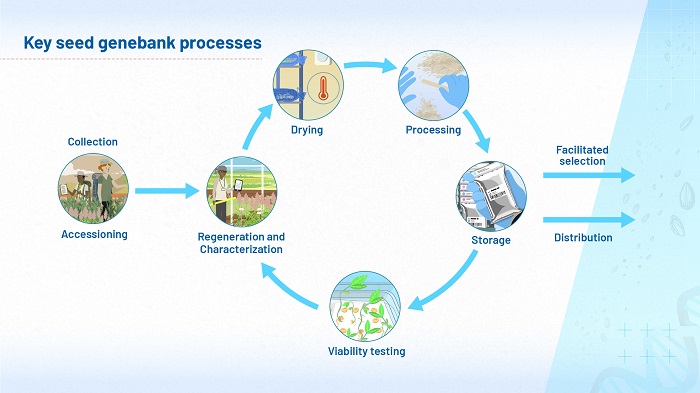Differences between species
There are very large differences in longevity between crop species. Researchers and CGIAR genebanks have been recording them for decades. This information, shared in the literature, gives us confidence that we know how long it takes for seeds of a particular species to lose viability in storage, allowing genebanks to set realistic schedules for regeneration.
You have already seen that we are now reaching the point where, for many short-lived species, we are starting to approach the ideal ‘steady state’ for genebanks, as illustrated in module 1, and reproduced here.

However, for the most long-lived species, even the CGIAR genebanks have not been around for long enough for us to observe directly how long it would take for viability to drop to 85%. For these species, which potentially can take thousands of years to lose viability, we have to rely on predictions. Figure 10 (below) shows the predicted times it might take for viability to fall from 98 to 85% if the seeds are stored under long-term genebank storage conditions (in moisture-proof containers at -20°C after drying to equilibrium with 15% RH and 15°C).
Like the longevity of any organism, the longevity of seeds in storage can be influenced by a number of factors. So far, we have considered time spent in storage, differences between seeds in a population, moisture content, temperature, and differences between species. This is not just of academic interest: it is important scientific knowledge that can improve your ability to do your job.
Dormancy
